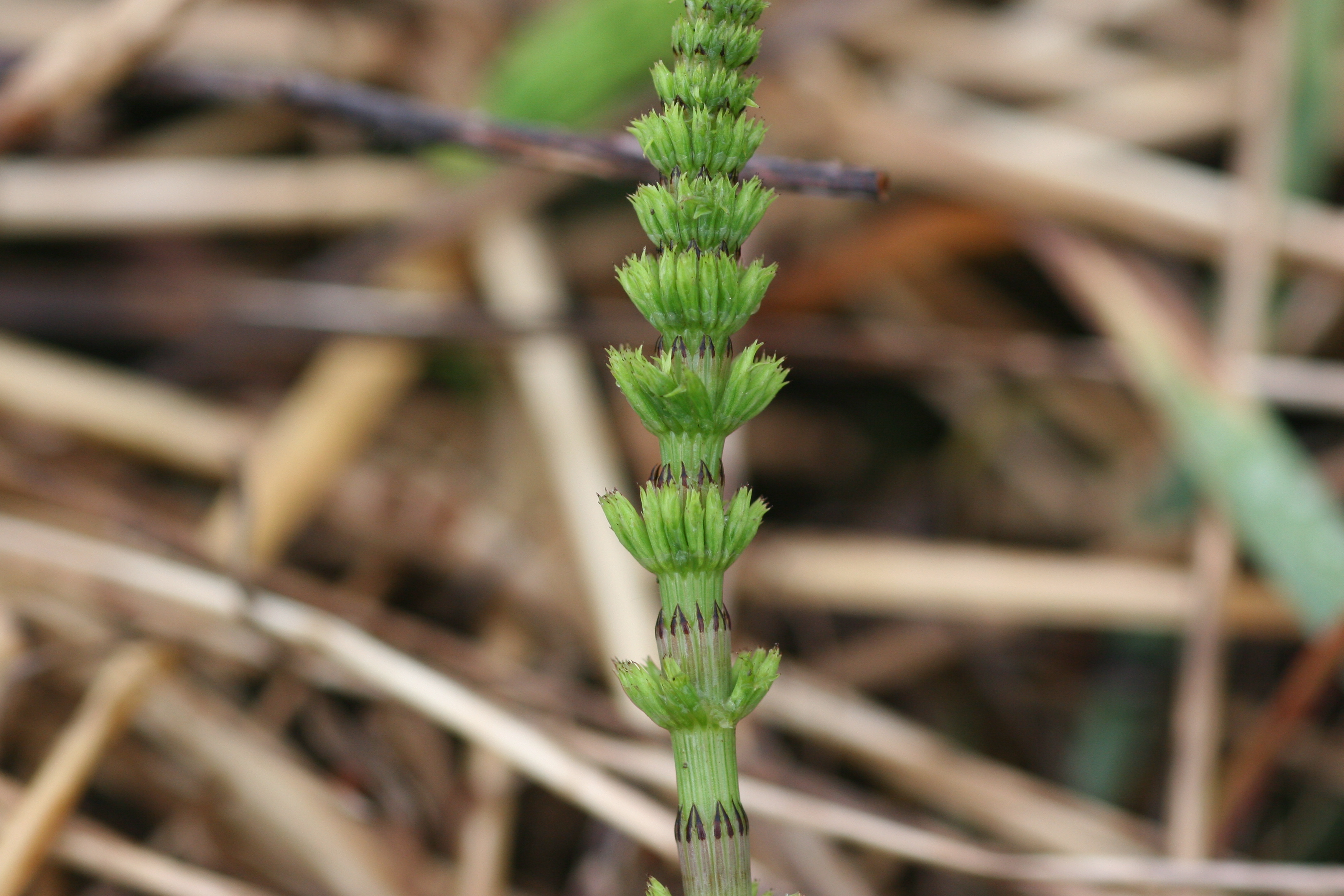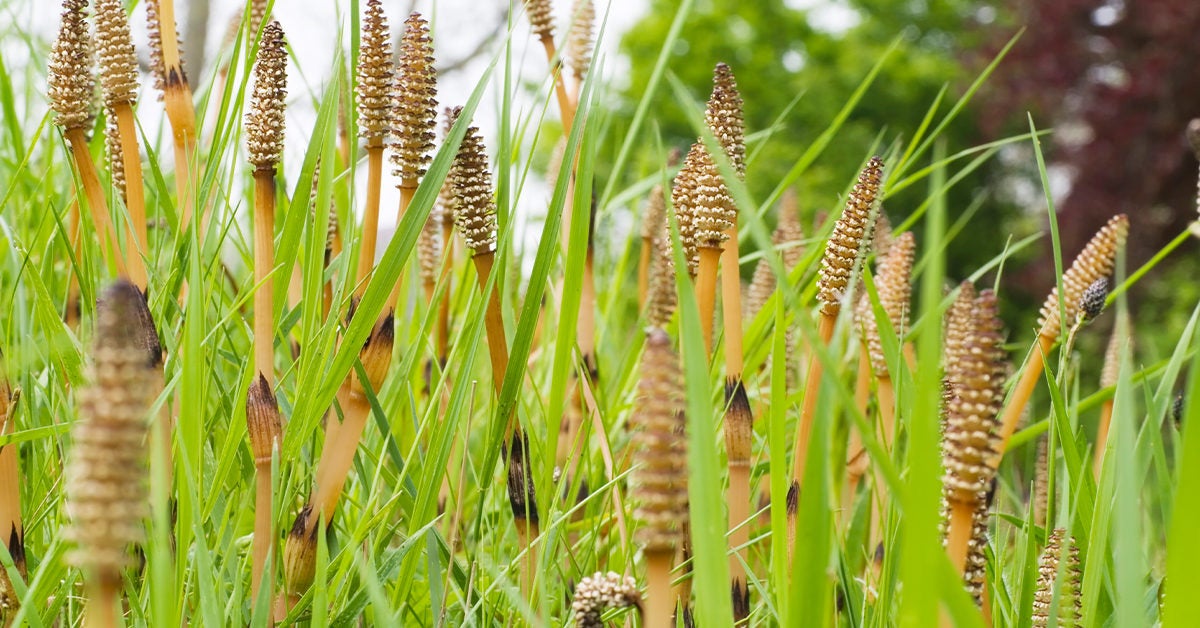Field Horsetail: The Plant That's Older Than Dinosaurs
Field horsetail is a plant that has been around for over 400 million years. That's right, it's older than dinosaurs! Field horsetail is a member of the Equisetaceae family, which also includes scouring rushes and spikemosses. These plants are all characterized by their hollow, jointed stems and whorls of spore-bearing leaves.
Field horsetail is a common sight in moist, shady areas throughout the world. It can grow up to 6 feet tall and has a distinctive, horsetail-like appearance. The stems are green and smooth, with whorls of 6-12 small, scale-like leaves. In the spring, field horsetail produces a tall, spore-bearing shoot that is brown or red in color.
Field horsetail is a non-flowering plant, which means that it reproduces by spores. The spores are produced in the spore-bearing shoots and are released into the air when the shoot dries up. The spores can travel long distances and can germinate in moist soil.
Field horsetail is a relatively hardy plant and can tolerate a wide range of conditions. It is also a fast-growing plant and can quickly colonize disturbed areas. This has made field horsetail a common invasive species in some parts of the world.
Despite its invasive status, field horsetail has some potential benefits. The plant contains silica, which can be used to polish wood and metal. Field horsetail can also be used to make a type of paper called "horsehair paper." In addition, field horsetail has been used medicinally for centuries. The plant contains compounds that have antibacterial and antifungal properties.
[Main Content]
Here are some of the interesting facts about field horsetail:
- Field horsetail is a living fossil. It has changed very little since it first appeared on Earth over 400 million years ago.
- Field horsetail is a relative of ferns. However, unlike ferns, field horsetail does not produce flowers or seeds. It reproduces by spores.
- Field horsetail is a fast-growing plant. It can grow up to 6 feet tall in a single season.
- Field horsetail is a common invasive species. It can quickly colonize disturbed areas, such as roadsides and construction sites.
- Field horsetail contains silica. Silica is a compound that can be used to polish wood and metal. It can also be used to make a type of paper called "horsehair paper."
- Field horsetail has been used medicinally for centuries. The plant contains compounds that have antibacterial and antifungal properties.
[Conclusion]
Field horsetail is a fascinating plant with a long and storied history. It is a living fossil that has changed very little since it first appeared on Earth over 400 million years ago. Field horsetail is also a relatively hardy plant that can tolerate a wide range of conditions. This has made it a common sight in moist, shady areas throughout the world. However, field horsetail can also be an invasive species. It can quickly colonize disturbed areas and can outcompete native plants. If you see field horsetail growing in your area, you may want to consider controlling it to prevent it from becoming a problem.
FAQ of field horsetail
What is field horsetail?
Field horsetail (Equisetum arvense) is a tall, perennial weed that is native to Europe, Asia, and North America. It is a member of the horsetail family (Equisetaceae), which is one of the oldest groups of vascular plants on Earth. Field horsetail can grow up to 6 feet tall and has a hollow, jointed stem that is green in color. The leaves of field horsetail are very small and scale-like.
How does field horsetail spread?
Field horsetail spreads by both sexual and asexual reproduction. Sexual reproduction occurs when the plant produces spores. These spores are released into the air and can travel long distances. Asexual reproduction occurs when the plant produces rhizomes, which are underground stems. Rhizomes can grow very long and can produce new plants at each node.
Is field horsetail harmful?
Field horsetail is not considered to be harmful to humans or animals. However, it can be an invasive weed that can crowd out other plants. Field horsetail can also be a fire hazard, as it is very dry and flammable.
How can I control field horsetail?
There are a number of ways to control field horsetail. One way is to hand-pull the plants. This is effective for small infestations, but it can be time-consuming and difficult to remove all of the rhizomes. Another way to control field horsetail is to use a herbicide. There are a number of herbicides that are effective against field horsetail, but it is important to choose a herbicide that is safe for the environment.
Are there any benefits to field horsetail?
Field horsetail has a number of potential benefits. It has been used medicinally for centuries to treat a variety of ailments, including kidney problems, arthritis, and gout. Field horsetail is also a good source of silica, which is a mineral that is important for healthy bones, skin, and hair.
Image of field horsetail
5 different images of field horsetail from Pinterest:
- Image 1: A close-up of a field horsetail plant, showing its tall, slender stems and whorls of green leaves.

- Image 2: A field horsetail plant growing in a meadow, its stems reaching up to several feet tall.
- Image 3: A field horsetail plant in bloom, its stems topped with clusters of brown, spore-bearing cones.

- Image 4: A dried field horsetail plant, its stems and leaves brown and brittle.

- Image 5: A field horsetail plant being used to make a tea, its dried stems and leaves steeping in a pot of hot water.

Post a Comment for "Field Horsetail: The Plant That's Older Than Dinosaurs"